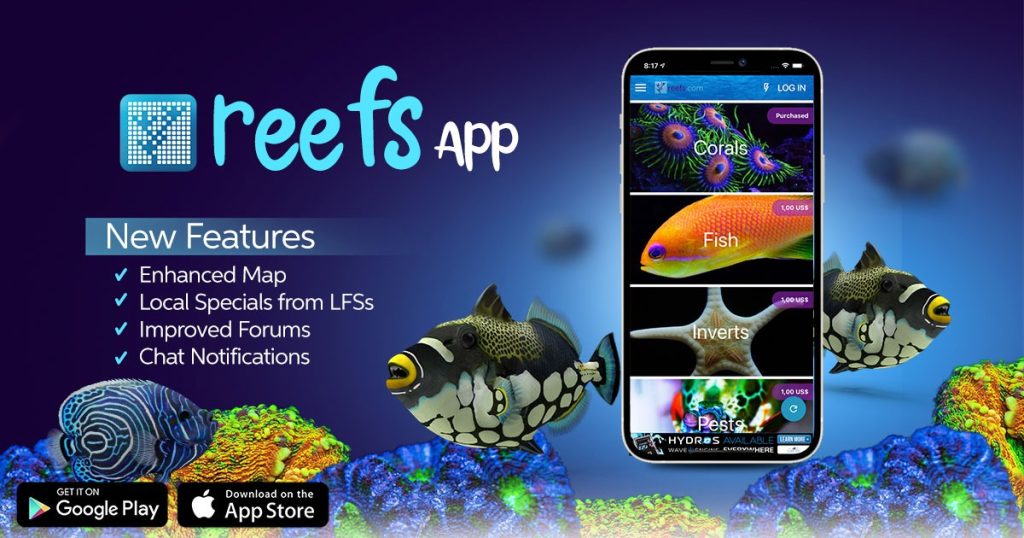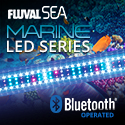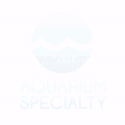by Gary Parr | Apr 23, 2016 | Corals, Podcast, Reef, Science, Technology
Can you grow overweight corals?
It’s time for a new podcast. A little early this week due to upcoming weekend commitments. This week’s topics include coral feeding and over feeding, lighting technology, and advancements in flow pumps. Download the podcast here, or subscribe to our podcasts at iTunes. Also, follow us on Twitter at reefthreads.—Gary and ChristineSponsor: Rod’s Food
Rod’s Food website
NameEmail * by Saltwater Smarts | Apr 19, 2016 | Corals, Fish, Reef, Science
The marine aquarium hobby is second only to the US military when it comes to the number of acronyms its members throw around. (Quite fittingly, this past Monday was the 27th anniversary of my DOE. Shortly after that date, I entered BMT as an A1C and did lots of PC under the direction of a TI before going on to AIT where I got an LOR for violating the UCMJ in advance of my PCS.) For today’s post, I’d like to address a somewhat common hobby acronym mentioned in an email I received from one of our readers. He quite succinctly queried, “What the heck does ‘PE’ stand for? I see it used in online forums a lot.”The acronym “PE” has the distinction of representing two terms in our hobby. If you read it in the context of a discussion on foods and feeding, the acronym likely refers to Piscine Energetics, a company headquartered in British Columbia that supplies PE Mysis®, a popular brand of Mysis relicta, among other products. But in hobby parlance, “PE” can also stand for “polyp extension,” which is exactly what it sounds like—the degree to which a coral extends its polyps. Why does this matter by Saltwater Smarts | Mar 8, 2016 | Corals, Fish, Reef, Science
Sun coral (Tubastraea spp.)When ascribed to the various species of the genus Tubastraea, the common name “sun coral” is both fitting and ironic. It’s fitting when you consider that the spectacular polyps of many Tubastraea species can quite justifiably be described as sun-like in both color and shape. On the other hand, it’s ironic in that these species, unlike so many of the corals that grace our aquariums, lack symbiotic zooxanthellae and, therefore, don’t depend on sunlight—or intense reef-grade aquarium lighting—for their sustenance. Having no special lighting needs might seem to suggest that these corals would be a good choice for the novice reefkeeper. However, just the opposite is actually true. Tubastraea are heavy feeders that require a high level of commitment and exceptional husbandry skills and are generally best left to more advanced hobbyists.Physical traits Tubastraea spp. are considered large-polyp stony (LPS) corals, with several species possessing striking yellow to orange polyps that emerge from tubular, and in some cases branching, corallites. There are also darker-polyped species that appear in the aquarium trade from time to time, such as T. by Gary Parr | Mar 2, 2016 | Podcast, Reef, Science
One of the coral systems at Reef Wholesale, Toronto.
This week we’re joined by EcoTech’s Jay Sperandio and Trina Parsons and Patrick Foster of Reef Wholesale in Toronto. Our discussion is about the EcoTech Coral Lab project and focuses on the experiences Patrick and Trina have had while converting the lighting in their wholesale operation to LED fixtures. There is lots to learn that will help hobbyists. Be sure to download the Coral Lab white paper to learn more. Download the podcast here, or subscribe to our podcasts at iTunes. Also, follow us on Twitter at reefthreads.—Gary and ChristineSponsor: Rod’s Food
Rod’s Food website
Coral Lab/Reef Wholesale white paper
A Coral Lab Case Study of Reefkeeping with LEDs
NameEmail * by Saltwater Smarts | Feb 13, 2016 | Corals, DIY, Fish, Reef, Science, Tanks
Top down shot of Acropora microladosWelcome to the next level of coral care. By now I am assuming you have at least understood all the key general practices to maintain some of the hardier corals, from soft corals to large-polyp stony (LPS) corals to some of the more rugged small-polyp stony (SPS) corals. Each category of livestock can be classified into various requirements for the piece of ocean environment you are trying to simulate. Oftentimes we tend to generalize that all parts of the ocean are the same, but as you become educated about the livestock you are trying to maintain, you will understand that there is no single recipe to make everything thrive and flourish in the same tank.Review time So let us review some of the key attributes we, as responsible hobbyists and nature fans, must familiarize ourselves with in order to provide a sustainable environment. The most common aquarium parameters are the following: 1. Tank dimensions Volume (amount of salt water for stability) Depth (impacts light penetration and available environmental zones) Size (impacts aquascaping, flow, lighting choices, growth) 2. Lighting Type: metal halide, T5, LED, or hybrids Spectrum (10,000 to 20,000 Kelvin) Intensity (lux) Photosynthetically Active Radiation (PAR) Photosynthetically Usable Radiation (PUR) Photoperiod (hours) 3.







